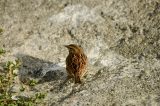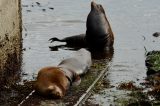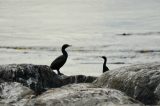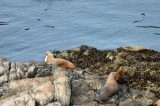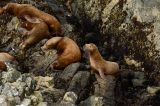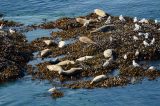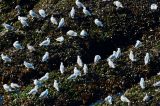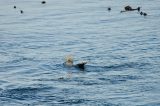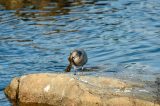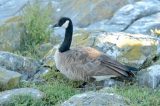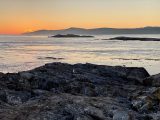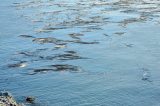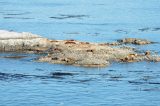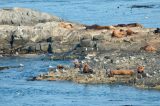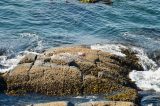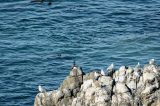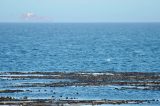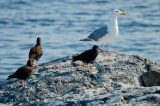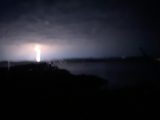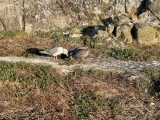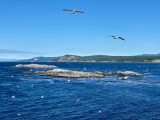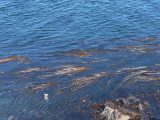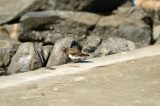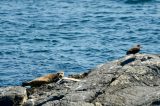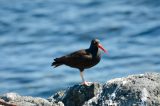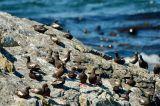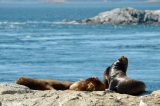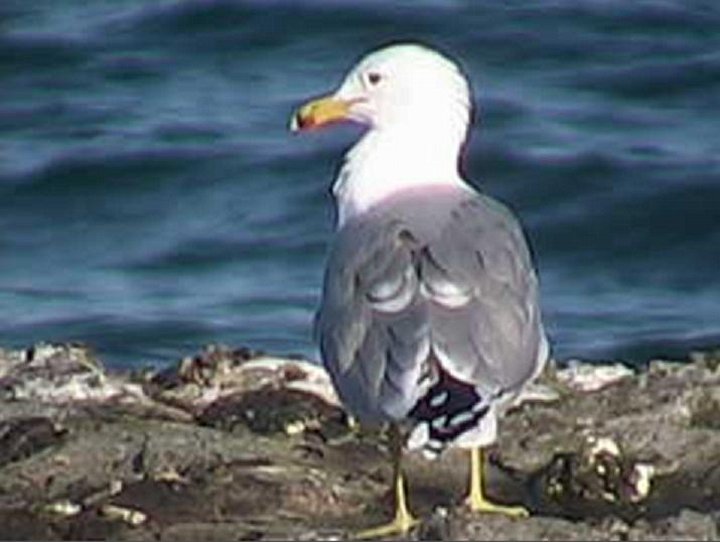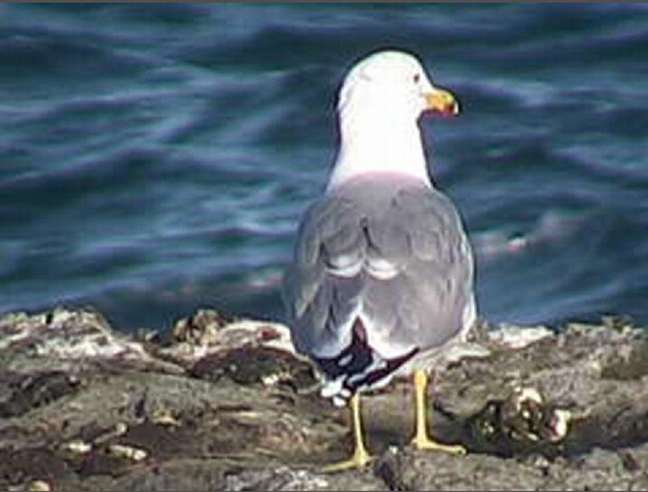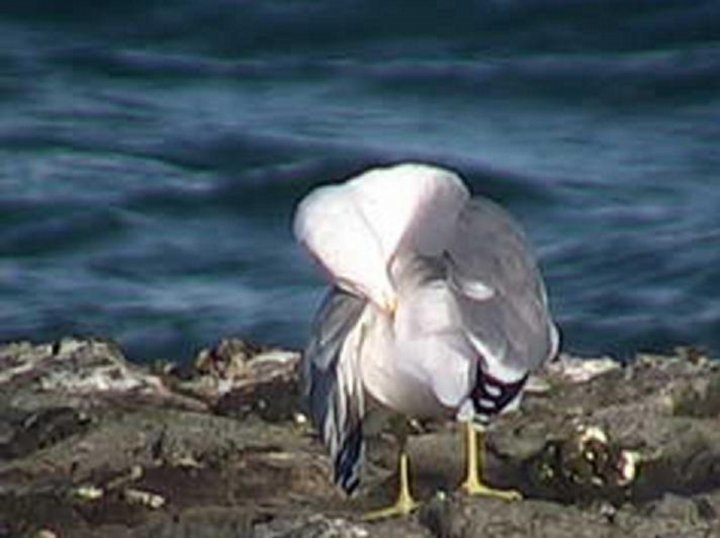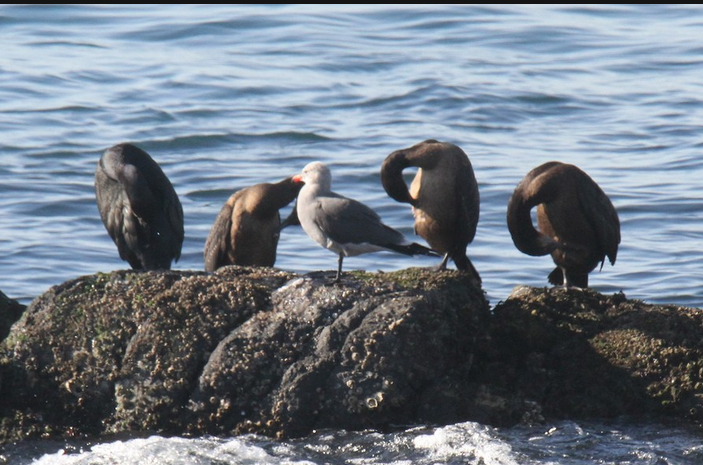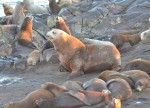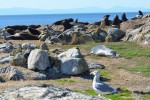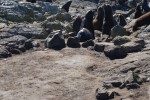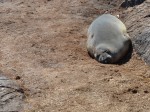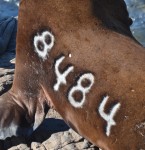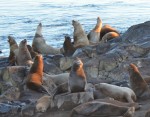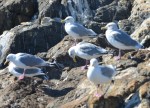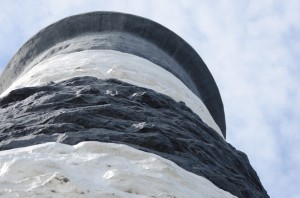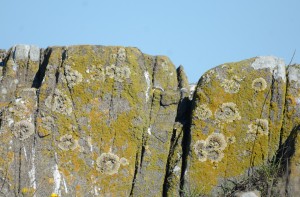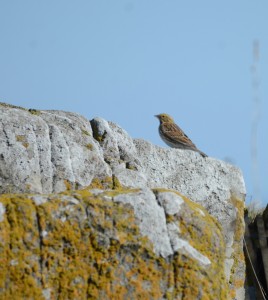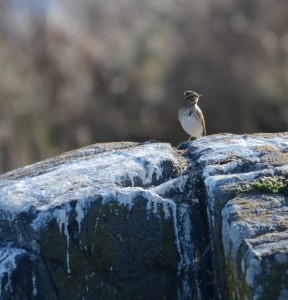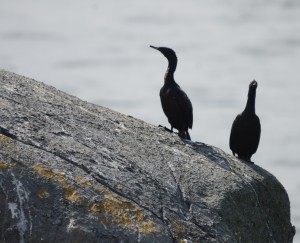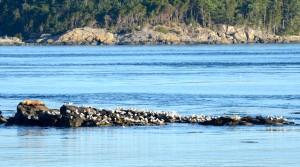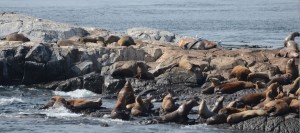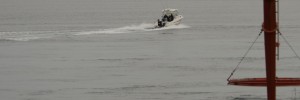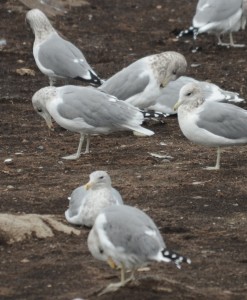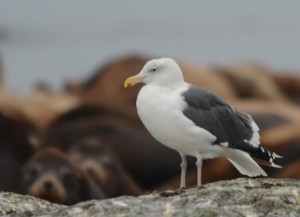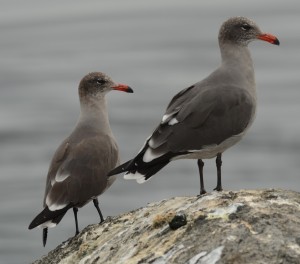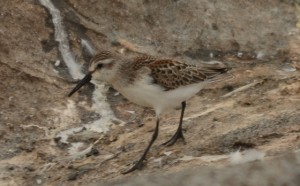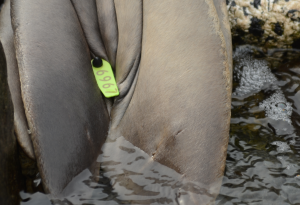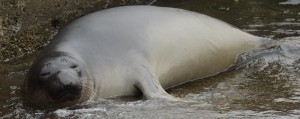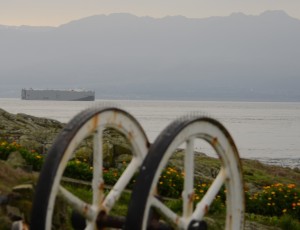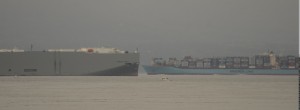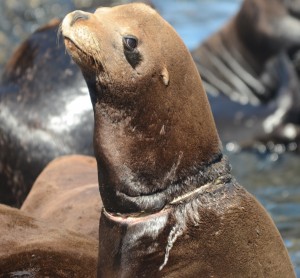The sky was partially overcast early but cleared a bit in late morning. Then it clouded over and finally started to rain as it socked in just before dark. The wind started out east-northeast then turned to west late morning before backing all the way around to southwest. The barometric pressure is rising as I write this log and the forecast calls for clearing in the morning and sunshine. Winds will turn to westerly 10 – 15 knots Friday afternoon.
Commercial whale watching vessels made fifteen observed visits to the Ecological Reserve today. One vessel regularly comes in fast and not slowing until well inside the go slow boundary and then consistently speeds up early. The same vessel can be seen hop-scotching ahead of endangered southern resident killer whales as the pass by and in the reserve, sitting almost on top of the sea otter. It is a large, noisy vessel that reliably pushes the limits of respectful whale watching and will end up by hitting an animal or worse. Most of the operators realize that this sort of behaviour is not sustainable.
Biggs Killer Whales were already being followed by the whale-watching fleet before they came into the Ecological Reserve from the east and milled in and around South Seal Rocks and the breaking rock just off the energy building. There were many sea lions in the water, some craning their necks to see better and others just trying to maintain as much time as possible in the air, by repeatedly leaping airborne. I am not sure if the killer whales made a kill or not but sense that they did. There was some fancy criss-cross swimming by the first three whales, then a little one accompanied by a bigger one arrived on scene. This was followed by a few minutes with all the whales underwater and gull action above, which made me think food leftovers. After that they left, heading south and then southeast, dogged by the fleet. Two vessels came into the reserve while the whales were already inside. It is possible that they were not aware on entering but they did not leave once they were aware of the whales’ presence.
Ecologically, the transition from summer into fall continues. Salmon migration is still strong and birds, pinnipeds and cetaceans abundant. The size of the multi-species feeding flocks on the water, is increasing daily with some aggregations (outside the protected area) appearing to have thousands of gulls.
Thursday is animal census day so here are the numbers for charismatic mega-fauna.
Steller Sea Lion 303
California Sea Lion 578
Harbour Seal 187
Northern Elephant Seal 11
Sea Otter 1
Southern Resident Killer Whale (2 in ER during count week, additional 18 in Race Passage during count week)
Biggs Killer Whale (Transients) 6 today (3 more during count week)
Humpback Whale (3 during count week)
Canada Goose 0 full time (flock of ~25 chased off almost daily)
Harlequin Duck 0
Double-crested Cormorant 25
Brandt’s Cormorants 22
Pelagic Cormorant 6
Unidentified cormorants 17
Black Oystercatcher 5
Black Turnstone 11
Kildeer 3
Glaucous-winged Gull total 453 (325 – adults; 128 – juveniles)
California Gull 847
Thayer’s Gull 180
Mew Gull 24
Herring Gull 0
Ring-billed Gull 2
Western Gull 2
Heerman’s Gull 36
Adult Gull spp (Unidentified) 242
Juvenile Gull spp (Unidentified) 223
Savannah Sparrow 9
Fox Sparrow 1
Unidentified Sparrow 1
Junco 3
Horned Lark (2 in count week)
Pacific Wren 1
Routine chores continue. There were six visitors today. Two very self contained Environment Canada technical service officers came out to do annual maintenance on their weather station up on the tower. If you were looking on camera # 1 you may have had a close-up view of them at work, calibrating, replacing and maintaining their instruments in full climbing gear. Thanks go out to them as well for the help they gave us before leaving the island. Two national geographic photographers came out to get a sense of the diversity of wildlife and of course take photos. Two young people who may potentially become eco-guardians also visited. Thanks go out to Don for helping move fuel, a heavy job. Well done. Courtney drove Second Nature to get them all out here and back safely and she was accompanied by Jasper, volunteer extraordinaire.
-
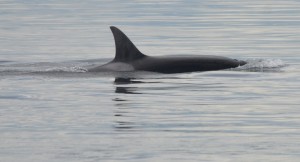
-
Killer whales, both southern resident and Biggs (or transient) killer whales, centre their key, late-summer, early-autumn habitat around Race Rocks.
-
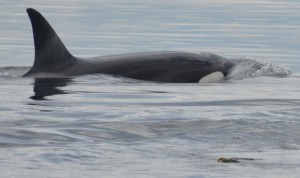
-
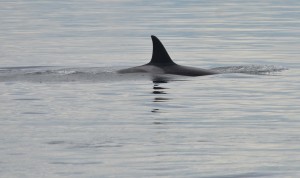
-
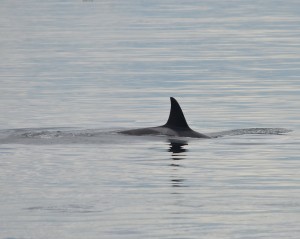
-
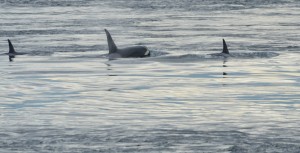
-
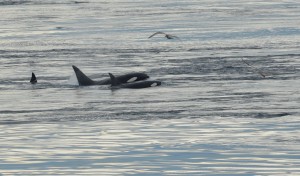
-
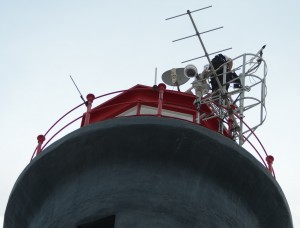
-
Environment Canada crew service their weather station atop the Race Rocks Light tower, with full safety gear.
